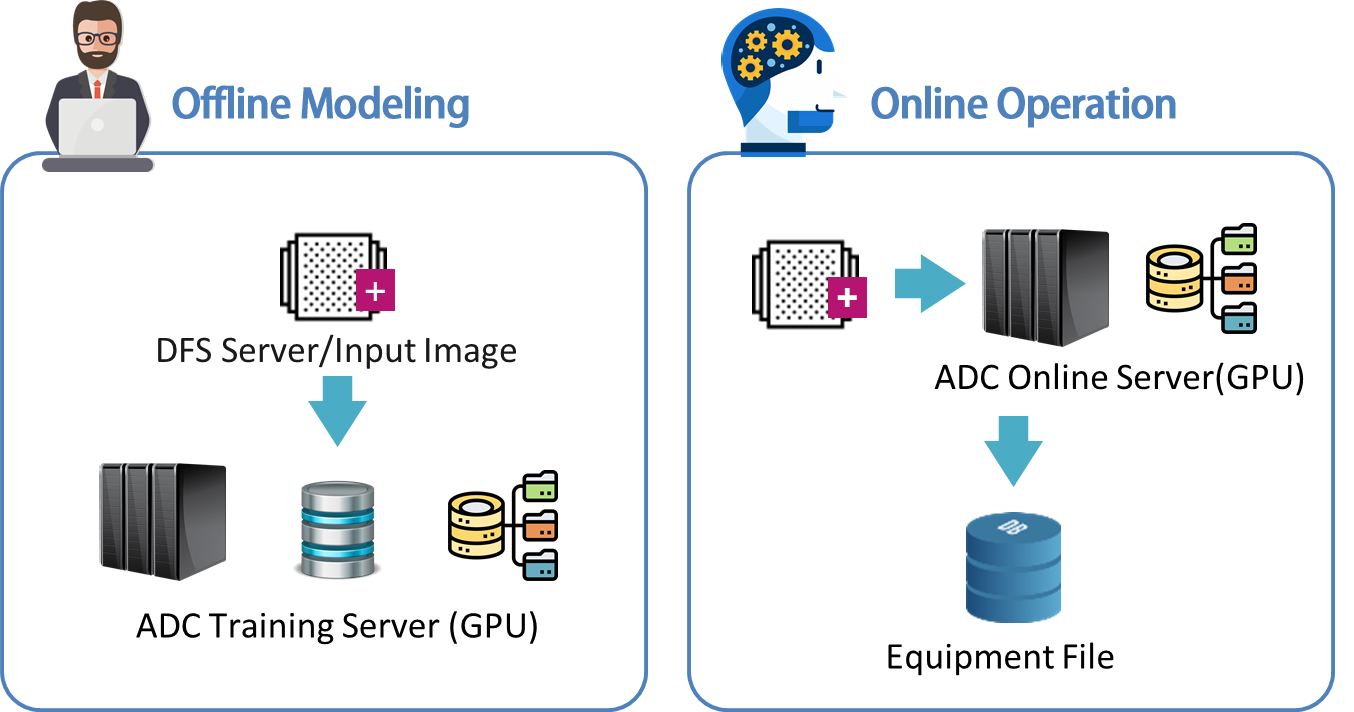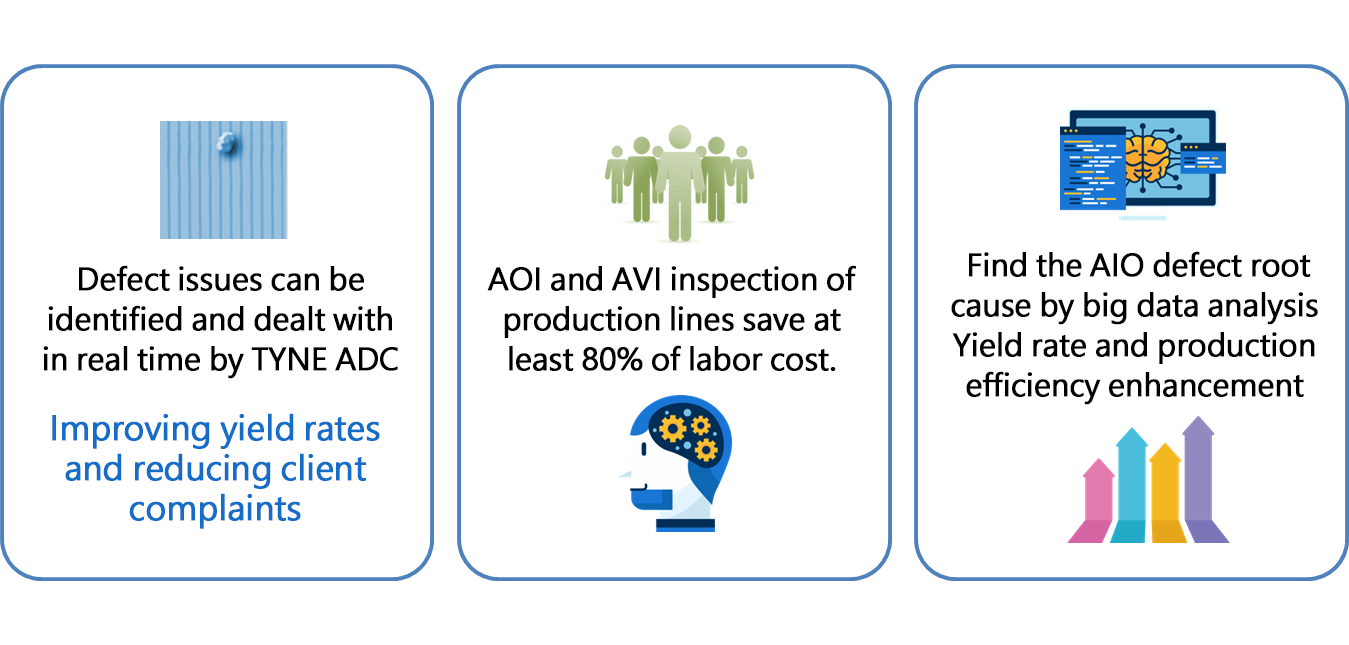All functions have to be ensured to be working well prior to shipping the products to clients. In addition to manual inspection, contactless automatic optical inspection (AOI) or automatic visual inspection (AVI) equipment can be employed during the production process. With high-precision lens and machine vision, the equipment identifies defective products. Integrating such testing equipment into the ADC System can greatly enhance the efficiency of quality management.
With rich integration analysis experience in various fields, TYNE has an in-depth understanding of industry characteristics and improvement needs, and has developed a system that integrates unique deep learning methodologies and statistical algorithms based on solid theoretical foundation. The system can not only automatically categorize defective images, but also accurately identify the location of defects and support automatic reworking or repair decisions. It is highly accurate and expandable and can greatly reduce inspection manpowers and increase efficiency and the level of intelligence of factories.
Combining TYNE ADC with TYNE AYEDAS System allows quick defect inspection while enabling the identification of the root cause of the defect. An improvement can be done from the fundamental level while improving the yield rate and production efficiency, which are all helpful for the enhancement of competitiveness of the manufacturing industry.








